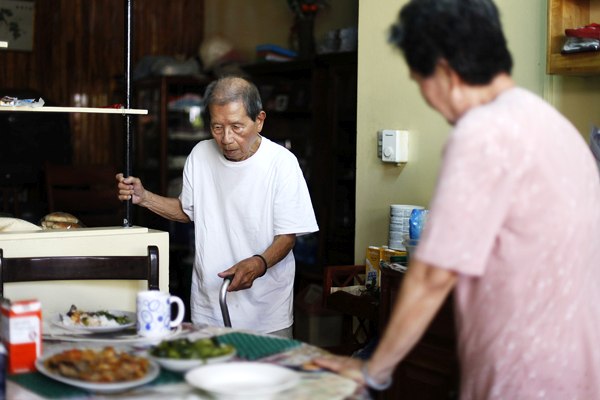
If you walk through downtown Nicoya, you’ll come across stores, cafes, restaurants and optician’s offices owned by families of Chinese descent who have been part of the community for decades or even a century. The same thing is true in other cantons such as Cañas and Abangares, where Chinese immigrants have put down roots since the second half of the 19th century.
This Day of Culture, we’re featuring five people from Guanacaste with Chinese blood who are a reflection of the multicultural and multiethnic nature of the province.

Rubén Alfaro is a Nicoyan communicator born in 1995. For the past five years, he has worked for the official NBA site for Latin America and has interviewed basketball players such as LeBron James, Stephen Curry, James Harden and legends such as Kobe Bryant and Shaquille O’neal.
The latter was the one who told Rubén that he looked like a “baby Yao” while he was covering an All-Star Game. He was referring to Yao Ming, the former Chinese basketball player for the Houston Rockets. He decided to adopt the nickname and has since been known as Baby Yao.

She was born in Nicoya in 1996. Her parents migrated from China to Santa Cruz, where they opened a Chinese restaurant where Checky fell in love with cooking. She began uploading videos that take her followers into the dynamics of her family, their cuisine, their culture and her witty personality. She remembers that her first video about Chinese food that went viral was in 2018 and now she has accumulated a million subscribers on TikTok and nearly 400,000 on YouTube.

“LuisGa” is part of a family of Nicoyan musicians and is the head of Los Ajenos, one of the most popular bands nationwide, which combines genres such as cumbia, ska, reggae and rock. The band started as a personal project 15 years ago and has collaborated with international artists such as Mosca Tse Tse and recently with Gustavo Cordera (former vocalist for Bersuit Vergarabat).

She is a female politician born in Nicoya in 1988. She inherited her passion for working in public fields from her father, Emanuel Ajoy, former legislator on two occasions (1990-1994 and 1998-2002). Currently she is also a legislator for the province, after years of working as a legislative advisor.

He’s an artist originally from Cañas. He was born in 1949 and studied communication at the UCR and art in Barcelona, Spain. He’s the artist behind the mosaics in the Cañas church and in the open-air Museum of Contemporary Art in Punta Islita in Nandayure. His art also encompasses writing short stories, poetry, essays about art and novels. He received the Aquileo J. Echeverría National Award in 1977.
Their Arrival
The Voice of Guanacaste spoke with Lai Sai Acón Chan, a professor and researcher at the University of Costa Rica who is dedicated to teaching about and researching Chinese immigrations in Costa Rica.
According to her research, the arrival of the first Chinese immigrants in the country occurred in 1855 with two groups of people: one group of 31 and another of 40. There aren’t many records of these people, Acón said, but a couple of decades later, a group of 653 Chinese entered Puntarenas and many of them immigrated to Guanacaste.
In a short amount of time, they began to create businesses and buy land. In the National Archive records, there are documents from the late 19th century that indicate the purchase of properties in Nicoya by a man named Andrés Sanchún (the patriarch of that family, which still has descendants in Nicoya).
One of the businesses that the teacher highlights in her research “From Puntalín to Guanacaste” is from a publication in the newspaper El Heraldo de Cañas, which in August of 1899, announced that the Mang, Chong, Wo & Co establishment offered “silk goods and all kinds of articles from the Celestial Empire.”
The reason for these immigrations was the difficult political situation that southern China was going through in the 19th century. According to the researcher, China’s two opium wars against England and the conditions of poverty and semi-slavery in which many people lived forced them (mostly men) to voluntarily go into exile in other countries.
New World, New Name
“Many of those surnames don’t exist in Chinese,” explained Lai Sai, when we asked her about some of the most well known ones in Guanacaste such as Apuy, Ajoy or Sanchún.
According to Acón, one of the most common mistakes was confusing the first name with the surname, because in Chinese, the surname is used first and then the first name.
She also explained that in China, there was a tradition of using several names to refer to the same person throughout their life. In addition to this, in Cantonese, it’s also customary to put the interjection “a” in front of people’s names.
“Rafael Ajoy was called Hau Joy. Hau is the surname and Joy is one of the names they gave him [in China]. So from there, people started calling him Ajoy. For example, they can call me “Alai” at home. That’s where the custom of other apparently Chinese surnames that start with A, like Apuy, Acón, Alán here in Costa Rica, comes from,” she said.
In the Costa Rican Pacific, many of these Chinese immigrants adopted names in Spanish such as José or Juan, something that didn’t happen on the Atlantic coast where they did retain their original names, explained Lai Sai.
All of these families have created lineages in our province, which is why Lai Sai believes that these people came to Guanacaste to seek their fortunes, but many of them fell in love, stayed here, had their families and became part of the towns.
“The Chinese have always been people who have tried to contribute to their community and try to be part of it. You have to understand the economic and social contributions. You also have to understand how they have integrated and become Ticos and Guanacastecans,” stressed Lai Sai.







Comments